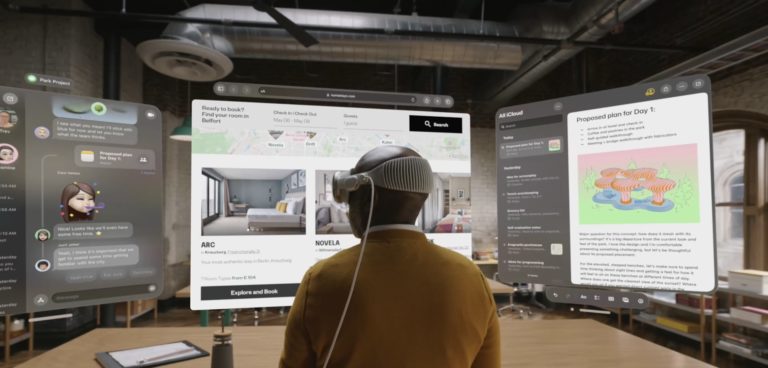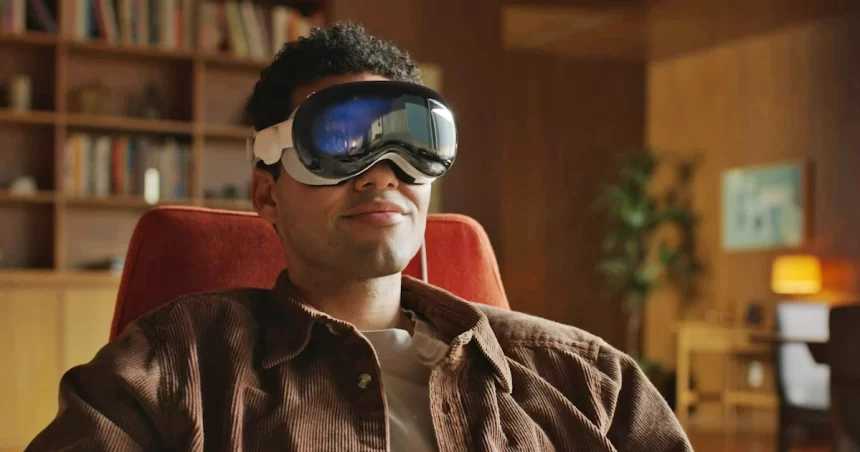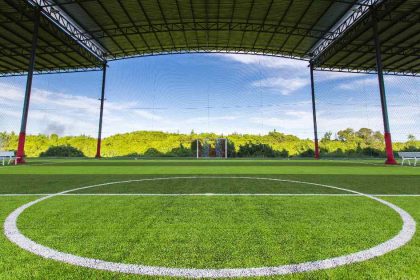Our brains work differently when using virtual reality than when consuming other media. When we read a book or watch TV, our default mindset is disbelief – we adapt what we are seeing or reading in our minds. With virtual reality, our brains are immediately ready to believe what we are consuming and then work our way back to disbelief.
In education, students are taught to be critical thinkers and to back up statements with supporting evidence – a starting position of disbelief. But what happens when we flip the switch on that? What happens when we introduce virtual reality as a teaching tool, placing students into a default position of belief in what they are being presented with? In a sense, we are stripping students of their intuitive critical faculties at a time where those abilities are still in development.
Earlier this week, Apple unveiled its long-rumoured extended reality (XR) headset. The Vision Pro combines virtual reality with augmented reality into the one device. That mix of experiences makes the headset an especially appealing proposition in that it delivers the benefits of constructed environments and scenarios into teaching, while still providing a tangible, real-world experience for students to connect to.
It should prove to be a great tool to enhance education for students. Eventually. Price will be the limiting factor for school budgets and everyday consumers alike. The headsets will be released in early 2024 at an eye-watering US$3499. It may be a few years before we start seeing these used by people en masse.
At that high price, it will be a few years until Apple’s headsets are widely available in classrooms. Quite likely, private schools will be among the first to adopt the technology, using the pricey hardware as a selling point for the parents of prospective students.
Partial immersion for students
The obvious use case for VR is to immerse students into environments they are being taught about. The history of World War II can come alive if the students are being taught while on the battlefield, the science of dinosaurs becomes all the more real if students can walk alongside them, and geography becomes more accessible if students are able to travel the globe to better understand foreign cultures.

What Apple is offering via its headsets is a slightly different proposition than straight VR. It isn’t creating wholly new environments to exist within, but rather it layers a virtual experience over the top of the real world. So instead of thinking about the idea of walking in the battlefields of WWII, the experience may be about engaging with a computer generated soldier talking about his experiences, or having a scientific principle demonstrated in a familiar “real-world” environment.
Dr Luke Buckmaster is a researcher with a PHD in Virtual Reality (wild, right?). EducationDaily spoke with him about the new Vision Pro headset and asked what we can expect Apple’s ‘spatial reality’ to offer students. He explained it “…may include things like virtual representations of car engines, human bodies, or DNA sequences. But … the principles of critical thinking apply.”
For those bouyed by the idea that a real world context is being augmented with digital recreations via the Vision Pro, Buckmaster advises that while we may not find our perspective on what is real or not altered by what we are seeing with our eyes, we are still engaging with media and that has the same issues of perception and bias that all other media possesses. “Anybody using these tools should be aware of their limitations, their strengths and weaknesses, perhaps the motivations and preconceptions of the people who created them.”
The problem for young people
While there are obvious opportunities for educative experiences that can be delivered via a headset like this, Apple are marketing the headset initially as a productivity tool. So much of the marketing is based around adults working in front of multiple virtual monitors. As adoption of the technology increases, inevitably we will see more students working within ‘spatial computing’ environments for general studying.
As much as we try to empower and trust kids and teenagers, leaving them to their own devices within a virtual reality has some immediate and obvious concerns.

We all know the importance of monitoring online behaviour for kids. But also, there’s the concern about attention being spread too thin. The spatial computing environment is built for multitasking with screen upon screen of information and possible diversions.
It will be interesting to see what, if any, protections Apple launch to limit the number of distractions possible within these environments. Already, iPhones feature built-in functions that report screen and app usage, designed to users to be more cognisant of device usage. Will we start to see similar functionality within the Vision headsets with limitations that can be imposed upon functionality as we endeavour to protect our children and our easily-distracted selves?
Further reading: How students (and adults!) can avoid social media distraction)
A vision for tomorrow
One of the criticisms technologists have dished out to the Vision Pro is that it seems like a product in search of a purpose. At the launch event, Apple didn’t articulate why people would want to use the product. Instead, at first glance, the product seems to simply replicate the experience of using a computer in the real world – only now, with the experience strapped to the user’s face. Why do people want that? After all, the only obvious benefit seems to be that it creates multiple and bigger virtual screens for students to use.
And that’s a fair enough complaint. The argument against it, however, is that the Vision Pro announced this week is merely a first generation product that has been announced before third-party developers have had a chance to create experiences for the platform and to get creative about discovering what is possible. The platform will evolve and change, as will that expensive hardware.
Give it a few years and the headsets will be cheaper, offer greater accessibility, and offer more meaningful experiences. That seems positive for students and their parents’ bank balances – even if looking at the technology today, it seems more like an expensive toy than a worthwhile investment.
The Apple Vision Pro has considerable potential to impact not only how and what our students are learning in the classroom, but also to empower students studying at home.







